If you’ve ever gone on a diet, you’ve probably been concerned about carbs. There are high-carb diets, low-carb diets, no-carb diets, and everything in between. Each of these diets has claimed to be the best, which can leave a bitter taste in your mouth and a total confusion about carbohydrates: what do they do? Are they good for you? How many should you have in a day?
In this article we’re going to smash the illusions around carbohydrates, bring some clarity to the subject, and set you on your way with a basic understanding of how carbs work and how you can make them work for you.
Busting Carb Myths: Are Carbs Bad For You?
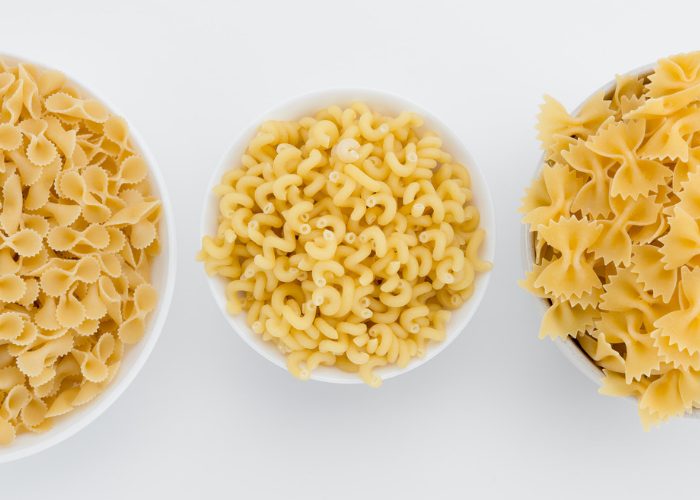
The first thing you need to know about carbs is that they don’t make you fat. There have been many discussions on the link between carbohydrates and obesity, but it’s nowhere near as simple as “carbs make you fat”, despite certain diets and groups pretending this is the whole truth.
Carbohydrates can be quite high in calories, however and they can contribute to over-eating simply because carbohydrate foods tend to be calorie-dense. Consider that in 100g of plain, white, penne pasta, there are 355 calories. This is important because it means a huge 88% of the weight of pasta is carbohydrate, whereas 100g of bacon is only 287 calories.
This doesn’t make carbs bad for you, however. Carbohydrates are like any other food source and you can’t simply reduce them to being “bad” for you because over-eating carbs causes obesity. The fact is that over-eating anything will lead to obesity[1], it’s simply the case that people who tend to eat more carbs are obese because they tend to eat more food in general – particularly calorie-dense refined carbohydrates. This distinction is crucial, because it has been behind massive marketing campaigns to popularize the paleo diet (or any other High-Carb, Low-Fat diet).
Carbs are also not going to cause wide-spread, undifferentiated inflammation, break your digestive system, or any of the other claims that you’ve heard in the past few years. The fact is that carbohydrates play an important role in the diet of many athletes and fitness enthusiasts, and it would be harmful to remove them entirely. A better alternative would be to go on a low carb diet, although it is important to keep in mind the potential risks.[2]
Types of Carbohydrates
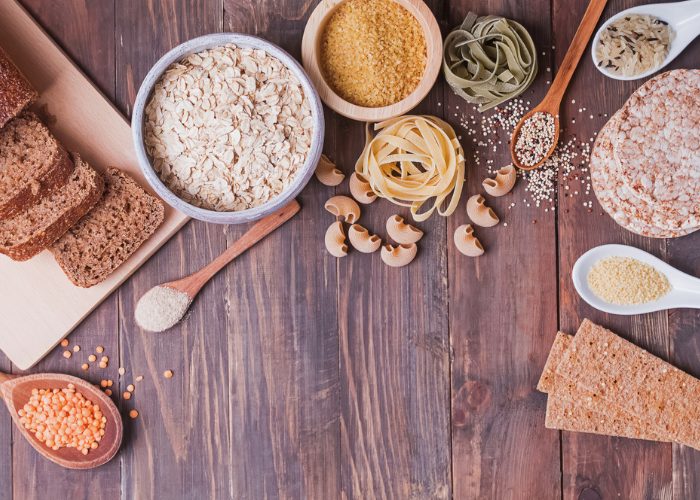
The term ‘carbohydrate’ just refers to any combination of carbon, hydrogen, and oxygen molecules. More specifically, carbohydrates are molecules that make up foods, and are the main source of fuel for the body[3] and the brain.
Carbohydrates can generally be broken down into 3 types. The first of these is fiber, and fiber is a fantastic part of the diet as it regulates digestive and metabolic health.[4] Starches are the most common type of carbohydrate, and they’re probably the foods you think about when discussing carbs: pasta, rice, and potatoes. Sugars are “simple” carbs, and they absorb rapidly – you’ll find these in fruits, sweets, and many processed foods.
Your diet should contain a balance and combination of these types of carbohydrates. Even sugars have an important role in the diet and it makes no sense to approach these macronutrients with an “all or nothing” mindset. Foods and nutrients are rarely ‘good’ or ‘bad’, so you need to look at their effects on the body within the context of your whole diet. Carbs are notorious for this problem: a diet with no sugar is sub-optimal, but a diet with too much sugar can cause diabetes. We’re going to provide you with the information you need to avoid fad diets, stay healthy, and improve your performance and physique.
Everything You Need to Know About Fiber
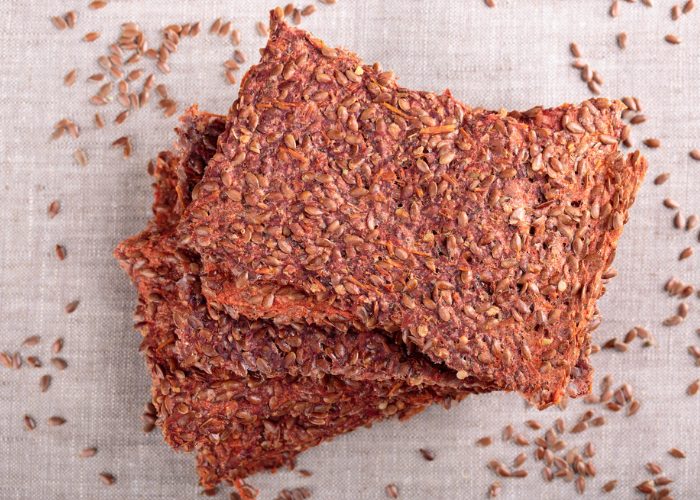
Fiber is the name we give to a collection of carbohydrates that cannot be fully digested by the body. The fact that it does not digest means that it provides a “bulk” to improve digestive regularity, and some forms of fiber (called soluble) bind to water and slow down digestion overall. You’ll find fiber in plant foods – this is one of the reasons why fruit and vegetables are an important part of dietary health and wellbeing. Dark, leafy greens have always been the best food to include in your diet, and part of this can be attributed to fiber.
Digestive Health
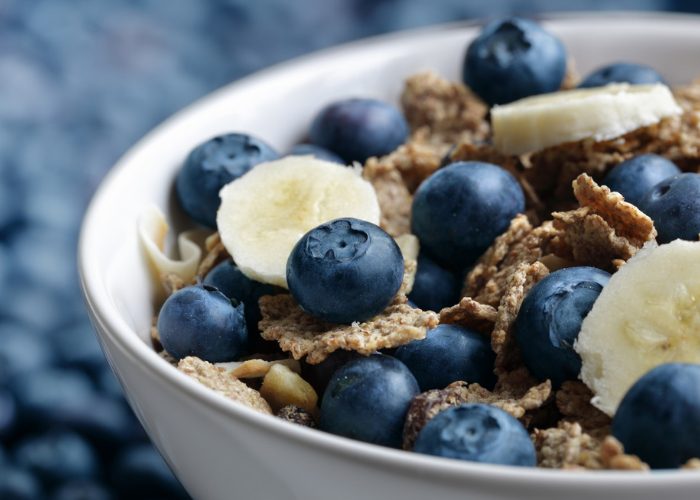
The main reason you should be eating fiber is the effect on digestive health. Fiber is slow-digesting and probiotic. The slow rate of digestion for fiber makes it a great choice for mitigating the effects of sugar consumption and balancing out your digestion. This is why we consider fruits healthier than other high-sugar foods. This also makes fiber a huge player in the regulation digestive health: whether you’re constipated or suffering from diarrhea, dietary fiber will regulate your digestion and get you back to proper health.
The probiotic qualities of fiber are also a huge benefit to health and wellbeing. Probiotic simply means that fiber is a great way to balance the gut environment and cultivate good bacteria. The role of probiotics in overall health is often over-estimated, but they are incredibly important for recovery from stomach problems or alcohol abuse.[5] While you will rarely need to focus on gut-cleansing or probiotics, having a stable, healthy fiber intake will contribute to long-term gut health. This is a great way to combat junk food cravings and stay healthy.
Fiber and Metabolism
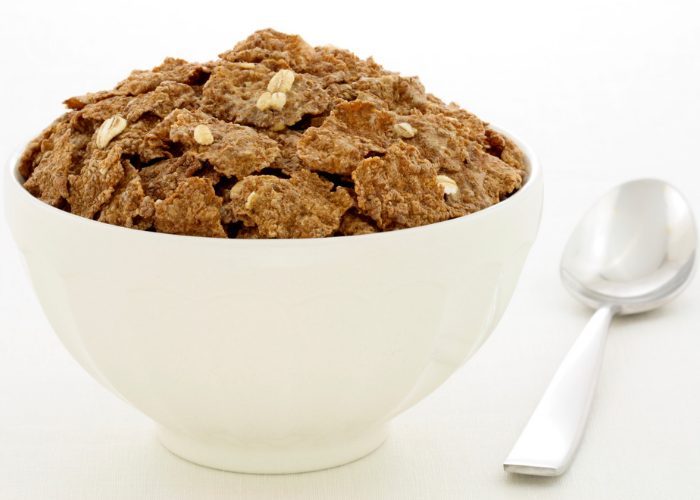
Slowing down digestion also has the secondary effect of combatting spikes in blood sugar and insulin that we see when consuming high-sugar foods. This has been closely linked with the risk of diabetes, and a diet that is rich in fiber can combat the onset of symptoms of pre-diabetes. For those who are already struggling with the effects of Type-2 diabetes, a high-fiber diet can provide a simple way of self-managing symptoms and moving towards metabolic health.
Fiber also plays a crucial role in the body’s ability to produce its own short-chain fatty acids. This conversion process is essential to a well-balanced metabolism and gives you the ability to structure your diet without having to account for the specific content of such short-chain fats.
A fiber deficiency is incredibly unhealthy for many reasons, but this effect is far less well-known than the effects on diabetes or digestion. Fatty-acid metabolism is a key part of health for the hormones, which modulate many health markers, including metabolism and weight loss.
Fiber and Weight Loss

There are many ways that fiber indirectly contributes to weight-loss. Fiber fills you up but it doesn’t contribute calories because you can’t digest it: you can eat more food with fewer calories, if you increase your dietary intake through plant foods, especially vegetables.[6] This is why we see that many high-volume, low-calorie foods contain a lot of fiber. Fiber plays a large part in the way that calories work in many mixed-carbohydrate foods such as beans and other vegetables, and these foods should be a large part of the carbohydrate load of the diet.
Fiber’s modulating effects on insulin may also play a role in weight loss. The science is still undecided on the relation between insulin, obesity, and weight gain. But there is reason to suspect that controlling insulin levels and combating insulin-resistance (a common symptom of obesity, which makes you more likely to gain weight) can reduce your overall weight gain. This is not only going to improve your diabetes markers (as mentioned above), but will provide you with the best hormonal environment to lose weight, gain muscle, and develop a sustainable long-term approach to weight management.
Practical Guidelines for Dietary Fiber
Dietary fiber is a key player in many important health and wellness markers with heart disease, nutrient absorption, and brain health on top of those mentioned above. Getting enough fiber means eating lots of plant foods, such as dark, leafy greens, whole grains, legumes, and top-quality fruits like blueberries.
What About Starch?

Starches are the kinds of carbs we’re most familiar with, and they’re found in the kinds of foods you might think of when carbs are mentioned: noodles, pasta, rice, and plant foods like potato and sweet potato. These are staples of the American diet and contribute to energy stores for exercise and life.
Starches: Medium-Chain and Its Implications

Starches are fundamentally similar to sugars but with longer chains of glucose. This makes them a slower-digesting and more stable carbohydrate source, which is why they have a smaller risk of developing diabetes or metabolic syndrome than sugars. They are “complex” carbohydrates. However, too many carbohydrates can still threaten health and wellbeing (as with anything): excessive starch intake is relevant because these long-chains still break down into glucose, which is added to the bloodstream and still provokes an insulin response.[7]
Medium- and long-chain polymers of carbohydrates are relatively calorie-dense, but studies suggest that the use of high-carbohydrate diets can improve satiety and reduce calorie intake when compared with high-fat diets.[8]
Starches play a large role in satiety and, while 100g of pasta was mentioned as an example of calorie-density, the ability to eat high volumes of these foods is relatively low. The per-calorie satiety value of starches is higher than dietary fats, despite the claims of individuals who advocate for high-fat diets (like paleo or Atkins).
Starches and Performance
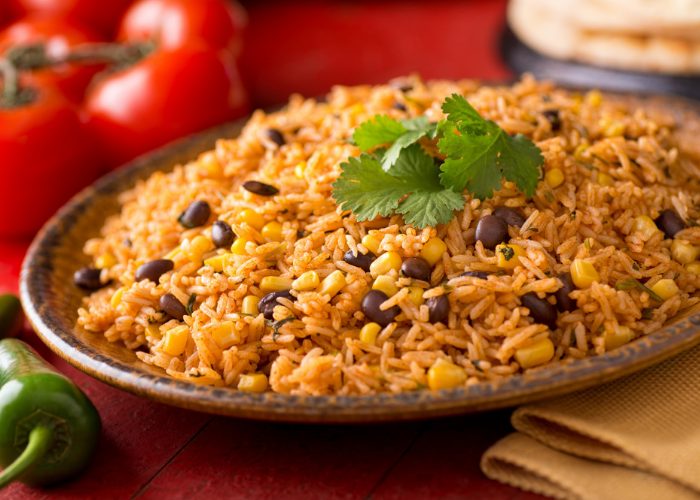
One of the most common benefits for starches is the effect on endurance exercise. You may have heard of the crazy diets of endurance athletes like Michael Phelps or certain marathon-runners, with their huge carbohydrate content. The reason for this concentration of carbohydrates is that they provide the most accessible and effective source of glycogen for athletes.
Because they break down into glucose, but more slowly than sugar, starches are a great way to fuel your body for maximum performance in endurance and stamina sports.[9] Whereas you benefit from eating sugars during exercise, starches are best consumed an hour or two beforehand to allow your body to fully digest and break them down into glucose to be used by the muscles and organs.
As mentioned above, carbohydrates are the obligatory source of fuel for the brain and central nervous system. Starches are a great choice for fueling cognitive and physical performance, as they provide many of the benefits (such as glucose to fuel the muscles and brain) without the adverse health effects we see from sugars and their rapid absorption. In many ways, the best thing about starches and other complex carbohydrates is that they are a source of glucose without being sugar.
Carbohydrate intake is also essential for maximum performance in strength and power but requires a smaller amount of carbohydrates to have an effect. A very-low-carbohydrate diet has been shown to reduce maximal force output, suggesting that carbohydrates play an important role in the maintenance and testing of strength and power.[10]
Obviously, strength and power athletes don’t require the same intake levels, but performance is closely tied to effective diet in both areas of sport and exercise and starches are the best day-to-day source for performance, with minimal health effects.
Starch Sources, Metabolism, and Variation
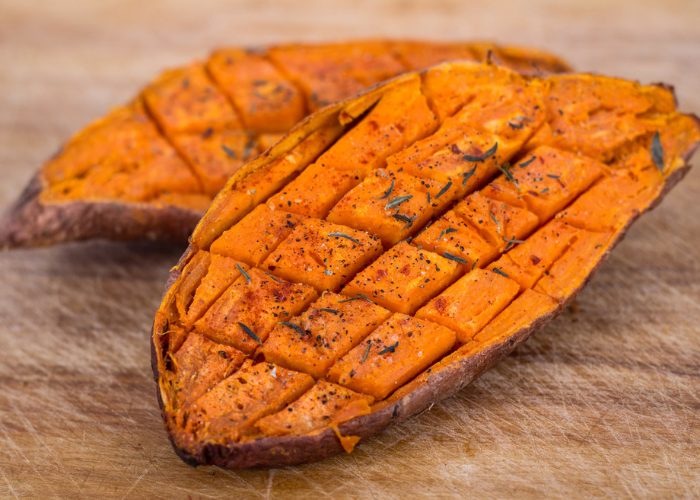
Starches and complex carbs are found in a wide variety of foods and these are often foods that contain a mixture of carbohydrates and fiber. The choice of complex carb sources covers “healthy” and “unhealthy” foods. There is great variety within the foods in the category of complex carbs because it is anything with a long-chain polymer, and some are more or less complex as a result. Simply put, there are some starches that are only just ‘more complex’ than sugars, whereas some are incredibly log chains and have a very slow absorption rate.
Some of the most popular sources of complex carbs are pasta, noodles, and gnocchi. These are all blends of wheat starches and other products, and their ‘white’ forms are simpler starches. These are faster-absorbing than their “brown” or whole-wheat alternatives due to the simplicity of flour – in many senses, wheat flour’s metabolic effects are closer to sugar than other complex carbohydrates. This makes simple, refined, “white” carbohydrates an inferior choice for those attempting to control GI.
Whole grains are a great source of complex carbohydrates, with oats being one of the most popular. Beans and legumes (such as quinoa and black beans) are another great plant source and contain a great deal of fiber and micronutrients to improve your health. These complex carbs are also the reason that some vegetables are referred to as “starchy vegetables” such as sweet potatoes, beets, or pumpkin.
Practical Guidelines for Complex Carbs
Complex carbs should make up more of your diet if you’re an endurance athlete, or a small but significant portion if you’re a strength and power athlete/enthusiast. The use of complex carbs in the diet should be related to the need to fuel up for long bouts of exercise. Try and get your complex carbs from unrefined sources, wholegrains, and high-quality plant foods like sweet potatoes and beans. For the best results in training, aim to eat your complex carbohydrates an hour or two beforehand to ensure the best results.
Sugar – The Controversial Carb

You’ve probably seen the sensationalist headlines: sugar causes cancer, sugar is more addictive than cocaine, sugar is going to make you fat, and many more. Is there any truth to these claims? Generally, no. Sugar is simply another form of carbohydrate that has been given an awful reputation because people eat too much of it. You’ll find sugar everywhere from drinks to pasta sauces – American food is full of sugar. The real risk is too much sugar, in the same way that any other excess of certain chemicals will have a negative effect on the body; the reason sugar is the most commonly vilified is simply because the threshold for “too much” sugar is low, and the amount in the “normal” diet is astronomical!
Sugar and Metabolism: GI, Diabetes, and Beyond

A sugar is simply a short chain of glucose molecules and there are a few different variations such as sucrose and fructose. The effects of being short-chain is that they absorb incredibly rapidly into the bloodstream and can spike insulin and blood sugar as a result.[11] This is not an inherently bad thing, but you must pay extra attention to the timing and quantity of sugars in your diet or you can suffer serious health risks.
The most common problem associated with excessive sugar intake Is type-II diabetes. Diabetes is one of the top 10 killers in the United States and the prevalence of obesity and high sugar intake are leading causes.[12] Type-II diabetes causes the body to mis-regulate insulin, the hormone that is associated with adjusting the absorption of sugars in the bloodstream. The development of insulin resistance (caused by obesity and eating too much sugar) is one of the first steps in the development of type-II diabetes, with a tendency towards further obesity and irregular metabolism,[13] as well as a variety of negative health effects and the risk of death.
As mentioned above – sugars aren’t bad for you by themselves, or in the correct quantities. Sugars are found in fruits and can play a great role in the diet when used properly. The problem is that the threshold for “too much” sugar is much lower than you may think: 30g per day is the recommended amount, whereas a single can of coke contains around 39g.
Keeping your sugar levels low is not only a great way to combat the onset of diabetes, but assists in the loss of fat by keeping your carb-burning systems in action, stopping them from being converted to body fat.
Sugars and Performance

Sugars are also important for improving athletic performance when structured and timed responsibly. A great rule of thumb to use is this: the closer you are to training time, the faster-absorbing your carbohydrates should be. This means that sugars are a great source of energy just before, just after, and during exercise. Studies show that carbohydrates can improve performance simply through detection in the mouth[14] and sugars consumed during a workout are directly responsible for the energy provided to the muscles and organs.
When we look at high-fat, low-carbohydrate diets, one of the biggest problems we see is the shift towards lower overall strength and power, as well as the ability to exert these qualities across the range of endurance activities like long-distance running. A low-carb diet can contribute to improved endurance at around 70% effort, but shows rapid decline in the ability to perform at top-end power. Sugars can rapidly improve the circulating glucose in the bloodstream, fueling greater performance in strength and power.
Practical Guidelines for Sugars
Sugars are a great tool in the diet, not the metabolic demon they have been presented as. As with any other nutrient, you should consume them with an awareness of the possible health risks. Moderation is key – try not to eat too much sugar! Time your sugars so that you consume them mainly around the time of working out. You should also mix them with high-protein and high-fiber foods to ensure that you’re keeping blood sugar spikes to a minimum.

Summary: What Should You Do Now?
The important thing to do with this information is use it to structure your own diet in a clear, level-headed way. The most important principle for dealing with carbs in your diet is to respect the differences between these 3 main types of carbohydrate and use them to make the most of your diet. Starches and sugars are great in your diet if you time them right (starches further from exercise, sugars closer to exercise) and get them from top-quality sources like whole grains, beans, and fruit.
The important thing to remember is that people who are telling you to completely cut out any form of carbohydrate are probably trying to sell you a miracle diet. The science supports the moderate consumption of high-quality, unrefined starches,[15] and sugars for intense exercise. Carbs won’t make you fat – they may have some negative properties if consumed in exorbitant amounts or in heavily-refined forms, but they are not good or bad by themselves!
Action Steps: Tips for Getting the Most Out of Your Carbs
- Know your carbs: pay attention to this article and make sure to cover any bits you didn’t catch the first time around! This is important information if you’re looking to get the most out of your diet.
- More fiber: fiber is great for health, and getting high-fiber vegetables into your diet is a great way to keep your calories low while staying full.
- Less sugar: You probably need to eat less sugar. About 30g a day is a reasonable suggestion and this should be timed to coincide with your workout.
- Work with high-quality starches: good starches from whole grains and legumes can improve satiety, and are often found with high doses of fiber and micronutrients.
- Focus on balance, don’t believe the hype: carbohydrates have been the subject of a ruthless smear campaign, but they do have their problems. Always focus on balance, and including foods in your diet to fit your needs and goals. Don’t restrict carbs: make them work for you!
References
- [1] https://www.cambridge.org/core/journals/proceedings-of-the-nutrition-society/article/basic-physiological-factors-affecting-calorie-balance/BE198D2A3A6FE27FA9A0F7354270FCD5
- [2] https://www.ncbi.nlm.nih.gov/pubmed/14672862
- [3] http://ajcn.nutrition.org/content/59/3/682S.abstract
- [4] https://academic.oup.com/nutritionreviews/article-abstract/67/4/188/1901012
- [5] http://onlinelibrary.wiley.com/doi/10.1111/j.1365-2672.1989.tb05105.x/full
- [6] http://ajcn.nutrition.org/content/34/2/211.short
- [7] http://europepmc.org/abstract/med/833676
- [8] https://examine.com/nutrition/high-carb-high-satiety/
- [9] http://ajcn.nutrition.org/content/41/5/1146.short
- [10] https://jissn.biomedcentral.com/articles/10.1186/s12970-017-0180-0
- [11] http://www.karger.com/Article/PDF/405694
- [12] http://journals.plos.org/plosone/article?id=10.1371/journal.pone.0057873>mRefSection=Dietas-y-Nutrici%C3%B3n
- [13] http://care.diabetesjournals.org/content/diacare/14/3/173.full.pdf?casa_token=6olP_Eo3j88AAAAA:GK95tAVAAr2wOVXw36uOXXR2JcXHymkqA5suwWE67qpY3yv6T-oMgbd3oWrggncmk2LKz4EKjSYDjg
- [14] http://onlinelibrary.wiley.com/doi/10.1113/jphysiol.2008.164285/full
- [15] http://www.sciencedirect.com/science/article/pii/S0924224407000817








